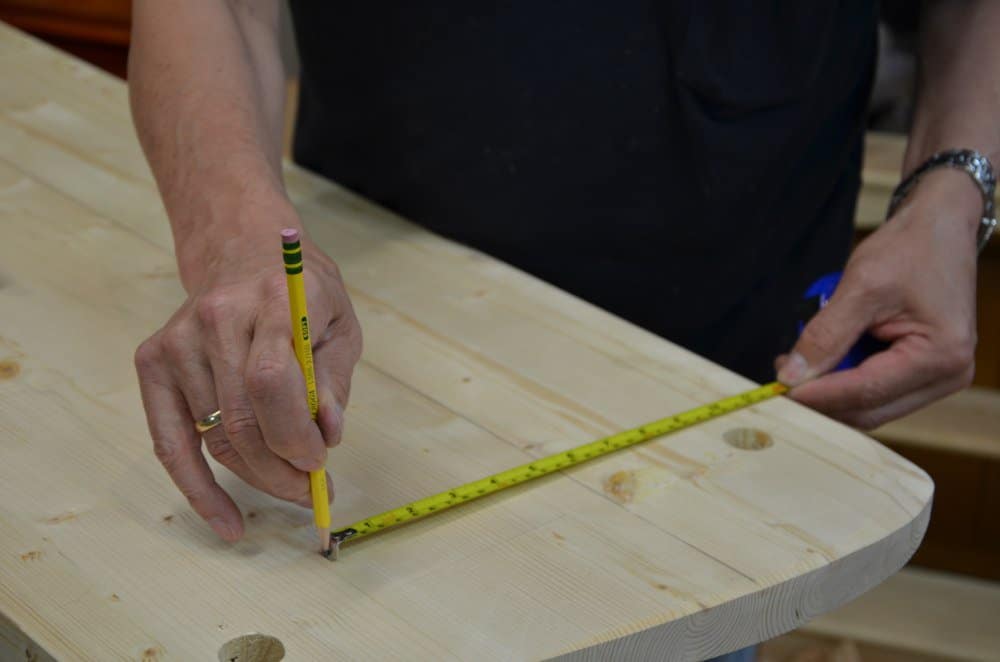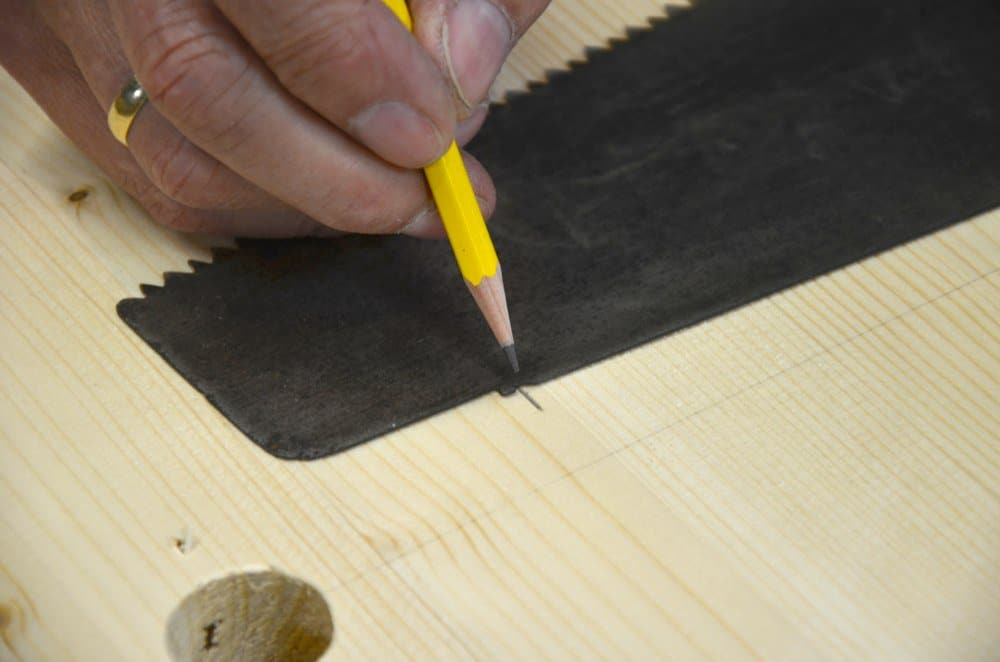Questions Answered – Why Nibs on Old Handsaws
Question:
Hi Paul,
I bought an old saw a some time back and can’t work out what the indent at the end of some older handsaw is for. Can you help answer this?
Johann
Answer:
About once a month or so I am asked this question and I always say that there are some good enough theories but most make no real practical sense for the simple reason that something more practical was around or the suggested use would not be something practiced enough for makers to build the feature into every saw for the few decades they were made. That said, there is no reason for not using what exists for a non intended use of it works well and here is a practical use I find works fine for me.
Measuring in the exact distance you want from the edge of a board or panel places the mark where you want it but the tape may not be rigid enough to hold a pencil against and pull the line like you would with say a square. Remember that this was the pre-tape measure era but straight rods and rulers were the common way.When the distance is more then the length of a square blade you can mark the distance and use the nib on the saw to pull the line as can be seen.
Mark the distance you need from the tape.
Place the indent nib next to the pencil mark and place the pencil in the recess.
Place the indent adjacent to the nib against the pencil.
Pinch the distance on the saw between the thumb and forefinger of the less dominant hand.
Pull the saw and pencil along the panel for a parallel line to saw to.






Make as good an answer as any I have ever heard! My own opinion is when ripping, you draw the saw back to the nib(approximately) to keep from pulling back, and possibly bind or kink saw!
Paul in USA
i was told to day by my 80 year old dad he said his granddad said it was used in a jig to to set the teeth when it was made and they thought it would be useful to sharping it in a hand jig it would move the saw to the next tooth now is this true will he told me a lot of story’s over the years
Yep it’s a tell-tale. Helps with boards when the end of the saw will be out of sight. Useful with unfamiliar saws or for beginners. Simple, effective and obvious.
The only mystery is the persistence of the myth that nobody knows what it’s for – which woodworkers keep repeating because it was written in a book 100 years ago by somebody who didn’t know what it was for!
Paul – that’s a very good example of making use of something you happen to have for a practical purpose.
There’s been a lot of debate over the years about what the nib was for on old saws, with several theories advanced. The generally accepted view now – supported by some old Disston documents – is that the nib is there for decoration, and has no intended practical purpose. It’s a sort of visual balance at the toe of the saw to the decorative appearance of the nicely-shaped older handles with longer, slender horns and lamb’s tongue detail. (The early Disston saws were made by emigrants to the US from Sheffield – they just took their manufacturing habits and quirks with them.)
The last saws with nibs were made up to World War 2 in Sheffield, when the feature was dropped altogether until revived recently by some of the bespoke US sawmakers.
Henry Disston was from Tewksbury Suffolk not Sheffield
John – I didn’t suggest that Disston himself was from Sheffield, but that some of his early workforce were.
Here’s a link to the FAQ page of the Disstonian Institute website, for those who’d like to persue the subject further – http://www.disstonianinstitute.com/faq.html
I have a very old Robert Sorby saw with two nibs, so I also think it was mainly for decoration. Can’t think of a practical use for a pair!
obviously, George, the double nibs allow you to draw parallel lines
Although this is a perfectly plausible explanation of the use of the “nib” all the testing I performed has shown that the true purpose of the “nib” is to break up the laminar flow of air as it passes over the blade thus reducing the sonic boom caused by the near Mach 2 speeds of the blade as I cut lumber.
I mean, I can’t speak for the rest of you but for me…
Terry I think you are Pullen our legs
The nib makes an excellent scraper to clean the splinters of the wood at bottom of a cut. I have used a saw with a nib for this purpose and it works great. I have no doubt that this was the purpose of the nib.
But the saw’s teeth do this perfectly too, Sam, and so too the back of the saw. Just saying.
Cleaning the splinters from a resultant saw cut, with the saw teeth, is not practical because of varied teeth sizes. Try it both ways and let me know which works better.
I was told by a senior woodworker that the “nib” when
with a sharp edge, it would make
a score to start the saw cut. It works for me, with pleasure and
a smile. At MacDonald’s Old Farm.
Inventive but not really true. Dozens of theories but no one knows that’s living.
I saw a picture of one that looked like a set of pit-saw teeth.
Lie-Nielsen’s panel saws still have the nib